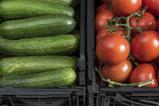Christian Aid report suggests almost two-thirds of areas’ banana regions will no longer be able to support the fruit’s production
By 2080, nearly two-thirds of banana-growing regions in Latin America and the Caribbean may become unsuitable for cultivation due to climate change, according to a new report by Christian Aid.
The charity said this posed a significant threat to the global supply of the world’s most consumed fruit and a staple food source for over 400mn people.
The report, titled Going Bananas: How Climate Change Threatens the World’s Favourite Fruit, highlighted the vulnerability of banana crops, particularly the Cavendish variety, which accounts for all but a tiny fraction of global exports.
“As well as growing conditions and extreme weather directly harming the growing conditions for bananas, they also contribute to the spread of fungal diseases,” authors Kat Kramer and Joe Ware wrote in their executive summary.
“Black Leaf Fungus can reduce the ability of banana plants to photosynthesise by 80 per cent and thrives in wet conditions making bananas at risk from erratic rainfall and flooding.
“Another fungal affliction, Panama disease, or Fusarium Tropical Race 4 as its known, has been found around the world in recent years and is spread through the soil. Once infection of the soil has occurred, then Cavendish bananas can no longer be grown there.”
While efforts have been made by a number of companies and academic institutions around the world to breed new resistant varieties and to develop treatments that mitigate the effects of climate change, it’s clear the challenges posed by a less predictable environment – cold, heat, high winds, and water shortages – are many and likely to increase the cost pressure on banana supply chains across much of the globe.
“The changing climate therefore has implications for where bananas can find it tolerable to grow, both through extreme weather events, such as heat waves, and longer-term climatic changes, such as increased average temperatures,” the authors added.
Rising temperatures and the increased cost of supply chain infrastructure, will result in a 60 per cent reduction in the area suitable for export banana production, the report predicted, with yield declines expected in most current banana producing areas within Latin America and the Caribbean.
“This region is responsible for around 80 per cent of global banana exports,” it stated. “This has been echoed by other research that has shown that by 2050, countries like India and Brazil are expected to see declining yield due to climate change with key exporters like Colombia and Costa Rica also affected.”











